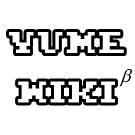mNo edit summary |
(remove category from here) |
||
| Line 5: | Line 5: | ||
Add <code><nowiki><noinclude></nowiki>{{t|Documentation}}<nowiki></noinclude></nowiki></code> at the end of the template page. | Add <code><nowiki><noinclude></nowiki>{{t|Documentation}}<nowiki></noinclude></nowiki></code> at the end of the template page. | ||
Add <code><nowiki><noinclude></nowiki>{{t|Documentation|documentation page}}<nowiki></noinclude></nowiki></code> to transclude an alternative page from the /doc subpage. | Add <code><nowiki><noinclude></nowiki>{{t|Documentation|documentation page}}<nowiki></noinclude></nowiki></code> to transclude an alternative page from the /doc subpage. In this case the /doc subpage must still exist (perhaps as a redirect). | ||
==Usage== | ==Usage== | ||
| Line 17: | Line 17: | ||
<noinclude>{{Documentation}}</noinclude> | <noinclude>{{Documentation}}</noinclude> | ||
</pre> | </pre> | ||
===On the documentation page=== | ===On the documentation page=== | ||
| Line 49: | Line 45: | ||
Note that the above example also uses the [[Template:T]] template. | Note that the above example also uses the [[Template:T]] template. | ||
===Preload=== | |||
[[Category:Template | If the template is used on a template page, but the /doc subpage does not exist, a link will be available that loads [[Template:Documentation/preload]]. This allows users to create the documentation with a suggested format already provided. Note that it is not an absolute requirement to use any particular structure. As long as it is understandable and covers all needed information, it is good documentation. | ||
</ | |||
<noinclude>__NOTOC__ [[Category:Template documentation]]</noinclude> | |||
<includeonly>__NOEDITSECTION__</includeonly> | |||
Revision as of 00:35, 12 May 2024
Description
This template is used to insert descriptions on template pages.
Syntax
Add <noinclude>{{Documentation}}</noinclude> at the end of the template page.
Add <noinclude>{{Documentation|<documentation page>}}</noinclude> to transclude an alternative page from the /doc subpage. In this case the /doc subpage must still exist (perhaps as a redirect).
Usage
On the Template page
This is the normal format when used:
TEMPLATE CODE
<includeonly>Any categories to be inserted into articles by the template</includeonly>
<noinclude>{{Documentation}}</noinclude>
On the documentation page
The documentation page is usually located on the /doc subpage for a template, but a different page can be specified with the first parameter of the template (see Syntax).
Normally, you will want to write something like the following on the documentation page:
==Description==
This template is used to do something.
==Syntax==
Type <code>{{t|templatename}}</code> somewhere.
==Samples==
<code><nowiki>{{templatename|input}}</nowiki></code>
results in...
{{templatename|input}}
<includeonly>Any categories for the template itself</includeonly>
<noinclude>[[Category:Template documentation]]</noinclude>
Use any or all of the above description/syntax/sample output sections. You may also want to add "see also" or other sections.
Note that the above example also uses the Template:T template.
Preload
If the template is used on a template page, but the /doc subpage does not exist, a link will be available that loads Template:Documentation/preload. This allows users to create the documentation with a suggested format already provided. Note that it is not an absolute requirement to use any particular structure. As long as it is understandable and covers all needed information, it is good documentation.
